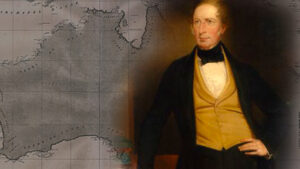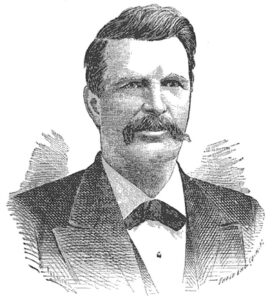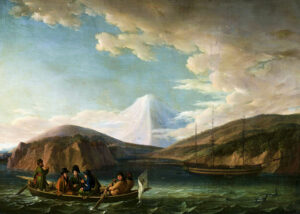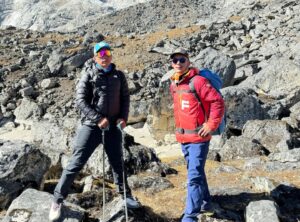Chris Bonington doesn’t need an introduction from a guy who only goes climbing when the weather’s perfect, and only clips bolts when he goes.
But I’ll give him one.
Sir Christian John Storey Bonington is a 19-time veteran of Himalayan expeditions, some of which were executed in the old military operations style of mountaineering. Many of these were successful.
A few of Bonington’s ticks, in no particular order:
- First ascent of Annapurna II with Richard Grant and Sherpa Ang Nyima (1960)
- First ascent of Central Tower of Paine, Patagonia, with Don Whillans (1963)
- First ascent of Changabang, Garhwal Himalaya, with Don Whillans, Doug Scott, and Dougal Haston (1974)
- First ascent of the Cime de l’Est NE Ridge, Dents du Midi, with John Harlin and Rusty Baillie (1964)
- First ascent of the Old Man of Hoy with Tom Patey (1966)
Bonington did it all
Biographer Chris Kalman called his decades-long presence in significant mountaineering “chameleon-like. Bonington simply did it all. He planned logistics, organized and envisioned teams and objectives, led major siege-style expeditions, participated in small alpine-style ascent, and always, always, climbed at a high technical level.”
Kalman’s entire paragraph is in the past tense, and this week’s video interview ages Bonington more than years can.
Bonington was 73 in the March 2008 conversation with the Himalayan Journal’s Harish Kapadia. And though he was not done climbing yet (among other things, Bonington would go on to ceremonially repeat the Old Man of Hoy as an 80-year-old), he’s an evident relic.
At three minutes in, Bonington recalls the conditions at the start of his climbing career, in the early 1950s. He roll calls his gear and remarks that the state of the climbing art “wasn’t all that different than it was before World War II.” His “clinker-nailed” boots bore a resemblance to Everest rigs from the 1920s.
At 8:30, he describes a Kathmandu with one tourist hotel and one road. He calls the walk to Annapurna II Base Camp an “approach march.”
At 20 minutes, he notes the challenge of coercing “very good” climbers to work together on expeditions so that few could summit and “become famous.”

Bonington and Whillans at the base of the Central Tower in 1963. Photo: Summit Post
Old as the hills
Missteps happen. Bonington comes, after all, from the vintage when Britain was, within living memory, an imperialist world power. He once stated that British Army officer and Himalayan mountaineer Jimmy Roberts was “in fact the founder of trekking in the Himalaya.” (Roberts’ contributions were significant — but many, many souls preceded him.)
Later, he says indoor gyms are “emasculating” the sport of climbing.
If nothing else, Bonington comes across as a tactician in his time. Watching this spot, I couldn’t shake the feeling that there’s a membrane separating everything he says from who he actually is.
He treats the topic of death coyly. He alludes to friendships he’s lost in the duck-duck-goose game of choosing expedition partners, but doesn’t get specific. When he says “climbing has diversified,” he means that mountaineering is now two-pronged (between paid expeditions and alpinism), and bouldering now exists.
If we’re lucky, we get to create ourselves when we’re young. But to be old is to become something. Watching this interview is like witnessing the aging process of climbing itself.






